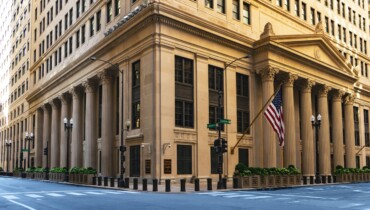The path towards a clearly fragmented global economy is continuing. Recently, the increase in tariffs on Chinese electric cars in the USA and the European Union has been particularly noticeable. What impact is the rise of protectionism having on the global economy?
Article on tag "China"
China hopes to extend its export boom with continued investments
Thanks to booming exports, the Chinese economy started the year with surprisingly strong growth. As growth has now lost some of its momentum, the aim is to keep the export boom going with new investments. However, this could have a negative impact on the trade dispute with the US and the EU.
India: The new counterweight to China?
The Indian economy is booming as more and more companies see the country as a potential alternative to China. In the coming years, India wants to become the third largest economy in the world. What is behind these ambitious plans? Is India really the market of the future?
Corporate bonds – Why emerging markets are worth a look
Fund manager Thomas Oposich explains in an interview what makes investments in emerging market bonds interesting and which sectors and companies he considers promising.
Inflation, interest rates, markets: 10 topics for 2024
After the price rally at the end of last year, the markets started 2024 with price losses. The ongoing positive correlation between bonds and equities is striking. Both asset classes have fallen equally recently, which makes diversification in a portfolio more difficult. But the year has only just begun. We therefore take a look at 10 key topics for 2024 that could be helpful when putting together a portfolio.
Can China’s economy still be revived after the slowdown?
According to Covid, growth in the Chinese economy is lower than expected and the willingness to invest and consume is declining. The real estate market is also adjusting after the boom years. What short- and long-term measures does the central government intend to take to revive the economy?

Hopes for a soft landing
In the past, sharp hikes in key interest rates often triggered a recession. After the latest economic and labour market data, hopes are growing for a soft landing of the economy.
What are the lasting results of the central bank meeting in Jackson Hole?
At the annual meeting of central bankers in Jackson Hole Federal Reserve Chair, Jerome Powell, summed up the uncertain environment as “navigating by the stars in a cloudy sky”. This relates, among other things, to the uncertainty about the level of the neutral interest rate, the lagged effect of key-lending rate hikes on economic growth and inflation, and the drivers of inflation.
The known unknown: China’s recovery proves more difficult than expected
After getting off to a good start at the outset of the year, economic recovery in China has recently stalled again. Following the lifting of stringent measures to contain the pandemic, the path out of the crisis is proving slower than expected. The flagging domestic demand as well as the ailing real estate sector, have recently put a damper on the world’s second-largest economy.
Soft landing with risks
Currently, the most important indicators point to average global economic growth and falling inflation. The probability of an immediate recession has decreased significantly. But the risks in the medium term remain. Chief economist Gerhard Winzer explains which three scenarios are currently emerging in the blog post.








